Year: 2024
Baha Balantekin wins 2025 APS Bethe Prize
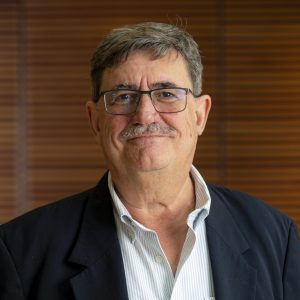
Congrats to Prof. Baha Balantekin on winning the American Physical Society’s 2025 Hans A. Bethe prize!
The Bethe prize is awarded to recognize outstanding work in theory, experiment or observation in the areas of astrophysics, nuclear physics, nuclear astrophysics, or closely related fields. Balantekin won “for seminal contributions to neutrino physics and astrophysics — especially the neutrino flavor transformation problem — both for solar neutrinos and the nonlinear supernova environment.”
Balantekin works at the intersection of particle physics, nuclear physics, and astrophysics. For much of his career, he has studied theoretical aspects of neutrino transport originating in the Sun, supernovae, or neutron star mergers.
“The concepts (I brought to the field) were marrying neutrino physics with many-body physics,” Balantekin says. “Of course, incorporating many-body aspects is common in condensed matter and nuclear physics, but it’s not as common in environments studied in astrophysics.”
Several fundamental astrophysical processes produce neutrinos as byproducts, and scientists have been studying neutrino origins and patterns for decades. Detecting the Sun’s neutrinos can reveal insights into its nuclear reactions, for example, and detecting neutrinos from core collapse supernovae can reveal insights into the early universe.
Balantekin’s early research was on the theory of neutrino transport from the Sun. He has also been studying core collapse supernovae, the result of a star running out of nuclear fuel. During collapse, a very hot star cools very quickly, emitting neutrinos on the order of 10^58.
“A number of that magnitude means you can no longer ignore the neutrino-neutrino interactions,” Balantekin says. “And then it becomes a very interesting many-body problem, where you have two-body interactions between neutrinos, and the propagation, and then it becomes a very complex problem.”
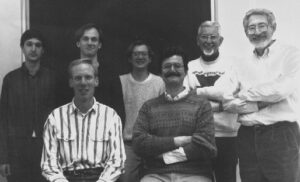
To describe this problem, has more recently begun using techniques from quantum information science to study entanglement of neutrinos with each other and to look at the signatures of such interactions and how they might contribute to heavy element formation.
The Bethe Prize was awarded solely to Balantekin, but he says he would not have won it without his collaborators over the years.
“You don’t do work in a vacuum,” Balantekin says. “I’ve worked with a lot of very talented young people. I would like to acknowledge first not only my graduate students at Wisconsin, but also the Fellows who came from the N3AS Physics Frontier Center we have. And the people I collaborate with around the world. We also have colleagues here in the department like Sue Coppersmith and Mark Saffman who contributed many ideas.”
The Bethe prize consists of $10,000 and a certificate citing the contributions made by the recipient. It is presented annually.
Britton Plourde elected Fellow of the American Physical Society
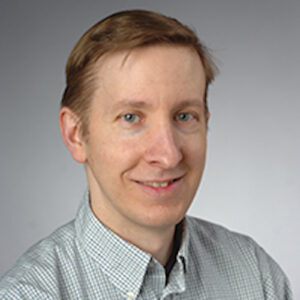
Congratulations to Prof. Britton Plourde for being elected a Fellow of the American Physical Society!
Plourde was elected “For important contributions to the physics and operation of superconducting qubits, including the development of techniques for scalable qubit control and readout, and investigations of decoherence from vortices and nonequilibrium quasiparticles.” He was nominated by the Division of Quantum Information Fellowship.
APS Fellowship is a distinct honor signifying recognition by one’s professional peers for outstanding contributions to physics. Each year, no more than one half of one percent of the Society’s membership is recognized by this honor.
See the full list of 2024 honorees at the APS Fellows archive.
UW-Madison, Japan’s National Institute for Fusion Science strengthen research partnership
Welcome, Prof. Elio König!
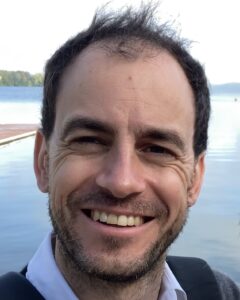
This fall, condensed matter theorist Elio König returned to Madison as an assistant professor of physics. König began his education in Germany and Italy, earning a PhD from the Karlsruhe Institute of Technology in 2014. He joined UW–Madison physics as a postdoc with Alex Levchenko, then completed a second postdoc at Rutgers University. Most recently, König held a group leader position at the Max Planck Institute of Solid State Research in Stuttgart, Germany.
Please give an overview of your research.
I’m a condensed matter theorist, so I study the collective behavior of quantum particles in materials. We study electronic collective behavior — behavior of electronic systems — and I study strong correlations in that regard. We do all of this with an eye on what’s happening in the quantum computation world. Our study of quantum materials can serve as a source of inspiration for building useful quantum devices in the context of quantum computers and potentially beyond.
And then reversely, the advances in quantum technology are of great use in our studying of quantum materials. We can use them as new probes, as new experimental techniques, and at the same time there is theoretical and conceptual cross-pollination. I’m inspired by these synergies.
What are one or two main projects your group will work on first?
The main directions that I’m heading in right now are 2D materials and trying to work more into concepts related to or at the interface between quantum materials and quantum information.
In the 2D world, what I’m really fascinated by is frustrated magnetism in these 2D materials, and in particular research on quantum spin liquids. Generally, the idea is to study states of matter beyond the standard concept of spontaneous symmetry breaking. We’re interested in topologically ordered states and quantum order, which is essentially based on the entanglement of many, many particles together. And these states of matter are relevant for topological quantum error correction codes. I think there’s also quite a lot of interest at UW already, both theoretically but also particularly experimentally, in 2D materials and I hope to collaborate with my future colleagues in that regard.
On the side of quantum materials and quantum information theory, there are ongoing projects that I want to extend on. I want to look for new setups for very robust quantum computers and topological quantum computation. At the same time, I want to use devices which are available right now for emulation of quantum many body systems.
What attracted you to Madison and the university?
This question is related to the question: why am I coming back to the States? I very much enjoyed my five years in the States, personally but also scientifically. The main aspect that I find more present in the States than in Europe is a more visionary approach to science. And I think this is also true for UW, so this is something that attracted me to UW. I know the department maybe better than other new faculty and it’s a fantastic place to work. I know that there are very inspiring colleagues, and I hope that there will be a chance to collaborate with them. And finally, Madison is a very nice place to live. I think it’s probably the nicest city of this size that I’ve seen in the States.
What is your favorite element and or elementary particle? [editor’s note: this interview was conducted via Zoom while König was on a cycling trip through the Italian Alps]
I read some previous interviews, so I knew this question was coming. And when I was biking today, I was thinking about it. Given that I’m mountain biking in the Alps and it’s really intense, I decided that oxygen is the element I want to go for. I can’t get enough of it right now. Oxygen is of course a symbol for the life that humans and animals have on this planet. Finally, oxygen is also a symbol for the advances of science and scientific revolutions, for example Lavoisier’s pioneering work in this regard.
What hobbies and interests do you have?
I really enjoy biking — mountain biking and gravel biking in particular. This is the third time that I’m transversing the Alps. I got very much into dancing in the last three years in Stuttgart. I still dance forró, or Brazilian couple dancing, from time to time. I also like playing sports, particularly soccer and squash.
Rogerio Jorge receives first grant as a professor
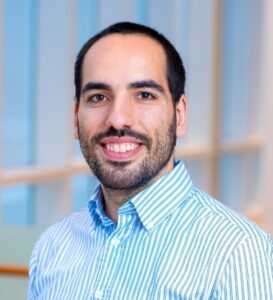
Congrats to Prof. Rogerio Jorge who was awarded his first grant as a professor! The three-year, $500,000 National Science Foundation grant, titled “Moment Approach to Multiscale Plasmas,” will be used to fund a graduate student and postdoc on the project.
“Astrophysical plasmas appear in more than 90% of the universe — for example, on the surface of the sun or in the intergalactic medium — and there’s still a lot of things that we don’t understand about them,” Jorge says. “We need to study phenomena in astrophysical plasmas and try to replicate them numerically to better understand them.”
Jorge’s work will focus on the so-called collisionless regime of these plasmas, where particles travel for a long time before experiencing any collision. He says this regime is difficult to model, both experimentally and numerically.
“We’ve proposed a new method that has two parts. The first one is to try to simplify the equations using a reduced model, called a moment model,” Jorge says. “Second, it’s using machine learning to reduce it even more.”
Jorge and his team have the moment model theory ready to be applied. For the machine learning step, they will use JAX, an open-source machine learning framework developed by the DeepMind team at Google that many physicists are starting to use in their research.
Jorge plans to investigate one intriguing phenomenon in collisionless plasmas: how the acceleration of super-thermal particles occurs versus thermodynamic heating. This will help scientists understand how charged particles in a plasma become energized, a phenomenon applicable to both laboratory and astrophysical plasmas. He will also apply this new approach to the problem of magnetic reconnection in collisionless plasmas, a problem he says is difficult to model due to the topology changes that occur in short time scales.
“We need new models to try to handle these complex scenarios without spending months and months on a single simulation,” Jorge says.
NSF grants require investigators to address the broader impacts of their research, defined as “the potential to benefit society and contribute to the achievement of specific, desired societal outcomes.” Jorge plans to work with the department’s Wonders of Physics outreach program to create realistic movies that simulate these astrophysical plasma environments. For example, he hopes to show, in detail, what is happening with magnetic reconnection in auroras or around the surface of the sun, with both using the new code developed through his research.
For this research, Jorge is collaborating with experimentalists at UW-Madison’s WiPPL facilities, and computational plasma physicists at UCLA, MIT, and Princeton.
New Chair to continue department’s strengths, commit to diversity and inclusion

The department of physics is pleased to announce that Prof. Kevin Black has been named new department chair. His three-year term began July 1, 2024, succeeding Prof. Mark Eriksson. Black says he is looking to continue the department’s excellence in its mission of research, teaching, and outreach, and to continue developing an intentional commitment to diversity.
“Under Prof. Eriksson’s leadership, our department has attained near-record highs of faculty members as well as graduate and undergraduate students, which will lead to significant successes in our research program,” Black says. “Now, we need to continue to focus on making a commitment to diversity an active component of what we do as a department.”
Two pillars of the department’s mission have always been research and teaching, and Black wants to sustain successes in those areas. He begins his term with over a dozen faculty members who have joined the department in the previous three years, bringing the total number of professors to 56. These faculty members represent a range of seniority levels and a breadth of research fields. He also begins at a time when more students than ever are being taught in department courses.
“Research and education are the core values of a research university,” Black says. “We want to do excellent, cutting-edge research and we want to teach the next generation of scientists.”
Black’s focus on diversity and climate efforts represents a continuing effort from leadership before him. The need to add diversity as a pillar of the department’s mission became evident to him when he saw the list of department chairs who came before him, and he noted that he was the 33rd white male chair out of 35. He acknowledges the challenge that the broader field of physics faces, and specifically at UW–Madison: both lack adequate representation of students from marginalized groups.
“We need to improve diversity at all levels in this department,” Black says. “There’s no magic wand. It takes a concerted, sustained effort and we need to make it a priority going forward.”
Lastly, Black also believes that the department’s commitment to educational outreach is critical to fulfilling the Wisconsin Idea, the idea that education should influence people’s lives beyond the boundaries of the university. The department has a long-standing tradition of engaging in outreach, including over 100 years of running the Physics Museum and over four decades of running The Wonders of Physics outreach program.
“Physics outreach can inspire the next generation to think about the natural universe and think about how things work,” Black says. “In a world which is increasingly driven by soundbites and nonsense on the internet, it’s crucial to encourage and guide young students to think rationally about science and formulate questions and opinions.”
Black joined the faculty as a full professor in 2018 and works with the high energy experiment group on the Compact Muon Solenoid (CMS) experiment at CERN. He had previously been a professor at Boston University. Black earned a bachelor’s degree at Wesleyan University where he worked in an atomic physics lab. He has a doctorate in physics from Boston University, and much of his thesis work was completed on the Tevatron at Fermilab. He was then a postdoc and research scientist at Harvard University, where his work transitioned to the Large Hadron Collider at CERN.
Daniel Den Hartog earns Progress Award from Laser Society of Japan
Congrats to plasma scientist Daniel Den Hartog who is part of a team that was recently awarded a Progress Award from the Laser Society of Japan. This award is given to research that has shown a significant impact on the advancement of laser engineering.
The work was led by Ryo Yasuhara of the National Institute for Fusion Science in Japan. The team was recognized for “research on transient plasma electron and temperature distribution measurement by Thomson scattering method using a repetitive 20 kHz, 1.2 J, nanosecond laser.”
The Progress Award was one of a handful awarded recently by the Laser Society of Japan. For a full list, see LSJ’s awards site.
Separate research groups push fusion plasma performance to new levels
Two teams of scientists have announced a breakthrough in fusion energy research, demonstrating for the first time the ability to simultaneously achieve high plasma density and confinement in a tokamak reactor. Derived from a Russian acronym, a tokamak is a donut-shaped experimental device that uses magnetic fields to make use of the energy of nuclear…
The post Separate research groups push fusion plasma performance to new levels appeared first on Research & Development World.
Read the full article at: https://www.rdworldonline.com/separate-research-groups-push-fusion-plasma-performance-to-new-levels/Pupa Gilbert earns WARF Named Professorship
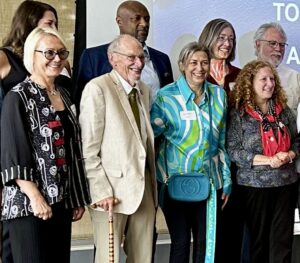
Back row from left: Lauren Bishop (professor of Social Work, Romnes winner), Charles Lee Isbell, Jr. (UW Provost), Susan Harness (Maria Stuchly Professor of Electrical Engineering), Russ Shafer-Landau (Elliott Sober Professor of Philosophy).
Physics professor Pupa Gilbert is one of eight UW–Madison faculty awarded WARF Named Professorships, which come with $100,000 and honor faculty who have made major contributions to the advancement of knowledge, primarily through their research endeavors, but also as a result of their teaching and service activities. Award recipients choose the names associated with their professorships.
Gilbert, the John D. Wiley professor of physics, joined the Department of Physics in 1999 as a full professor, following staff scientist positions in the Italian National Research Council (CNR) in Rome and the Swiss Institute of Technology in Lausanne (EPFL). Her research focuses on biomineralization, that is, on understanding the nanoscale formation mechanisms of natural biominerals, especially coral skeletons, but on a side she also studies sea urchin spines, mollusk shell nacre, tooth enamel, and inner ear cochleaer bone. She also strives to understand the evolution of biomineralization, and how biominerals interact with the environment in the past, present, and future. She is actively working to save coral reefs from climate change.
Her role in the profession has included being research director for the NSF-funded Synchrotron Radiation Center at UW–Madison, chair of the Division of Biological Physics (DBIO) of the American Physical Society, a Radcliffe Fellow at Harvard University, and establishing “the Cnidarians,” a group of tens of diverse undergraduate students at UW–Madison who produce great discoveries by doing massively parallel data processing. She teaches Physics in the Arts, a popular course for non-science majors on light, color, and sound. She was knighted by Italian President Carlo A. Ciampi in 2001.
“Prof. Pupa Gilbert is a luminary in the field of biomineralization, developing a fundamental understanding of these crucial processes that are shared by many diverse organisms,” says Kevin Black, chair of the UW–Madison department of physics. “Prof. Gilbert is a knight of the Italian Republic, and stalwart advocate for involving undergraduates, in particular those from underrepresented groups in her research. This award recognizes the many contributions to the academy in her long and productive interdisciplinary research program and is well deserved.”
For her named professorship, Gilbert chose John D. Wiley, the former UW–Madison Chancellor who earned his MS and PhD from this department. He was a member of the technical staff at Bell Laboratories, then a visiting scientist at Max Planck Institute for Semiconductor Physics. He joined the faculty at UW–Madison as professor of electrical and computer engineering in 1975, where he did groundbreaking research on semiconductors and metals, and earned major patents at WARF. Later, he became Chair of the Materials Science Program, Dean of the Graduate School, Provost, and then Chancellor (2001-2008), all at UW–Madison.
Wiley also started campus-wide initiatives such as cluster hiring and originated many campus building projects. He was the first Director of the Wisconsin Institute of Discovery, a position he held from 2008 until he retired in 2011.
Gilbert chose Wiley, whom she calls “a brilliant physicist,” for her named professorship for all the reasons listed above. She also credits him with bringing her to UW–Madison.
“When there was a cluster hire in biophotonics back in 1999, John Wiley wanted me to join the university and he had them include the word spectromicroscopy — the synchrotron method that I developed — into the search to encourage me to apply,” Gilbert says. “I really didn’t want to apply, I was on my way to CalTech, but of course I couldn’t say no to John.”
In total, thirty-two University of Wisconsin–Madison faculty were awarded fellowships from the Office of the Vice Chancellor for Research for 2024-25, including eight WARF named professorships, 13 Romnes faculty fellowships, and 11 Kellett mid-career awards. The awardees span the four research divisions on campus: arts and humanities, physical sciences, social sciences and biological sciences.
“These awards recognize excellence in faculty research, academics, and outreach at various stages of their scholarly careers and provide an opportunity for continued development of their research programs,” says Cynthia Czajkowski, interim vice chancellor for research. “I look forward to seeing the results of their imaginative use of these funds.”
The awards are possible due to the research efforts of UW–Madison faculty and staff. Technology that arises from these efforts is licensed by the Wisconsin Alumni Research Foundation and the income from successful licenses is returned to the OVCR, where it’s used to fund research activities and awards throughout the divisions on campus.